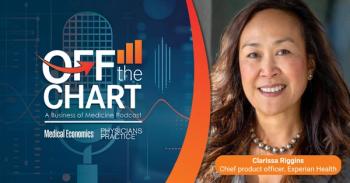
10 Medical Practice Financial Reports Docs Need to See
Here are 10 relevant financial reports each physician at your practice should see … whether they read them or not.
Hard data is crucial to Kyle Matthews, chief executive officer of a cardiology practice near Phoenix, and he regularly shares them with his physicians though 10 key financial reports.
The numbers tell him - and them - when to hire and when to fire, who has too many appointments and who has too few, and even when it's time to investigative missing referrals.
"Give them everything they would want to know even if they don't want to know all of it," advised Matthews, CMPE, of Phoenix Heart, PLLC, who presented at the Medical Group Management Association Annual Conference in Anaheim, Calif., on October 10.
Matthews recommended providing these 10 financial reports to partner physicians:
1. Practice Dashboard
This report, which can be generated by EHRs, includes information about financial balances and deposits. It can also provide details about accounts receivable, charges and collections by doctor. "I do it once a week and e-mail it," Matthews said. "If they read it, great. If not, it's up to them."
The reports are especially helpful when doctors go on vacation, he said. "I want them to see what impact that has on collections so they don't come back and yell at me when they get their compensation check."
2. Productivity Dashboard
This report focuses on weekly charges per doctor and highlights the lowest and highest weeks over a period
of time.
"This is for a practice that's focused on who was doing what and why," he said, because it allows doctors to pinpoint their best and worst weeks and figure out what they did differently. "It's a discussion starting point."
3. Monthly Overview
Through this report, physicians can review monthly or month-by-month financial data such as accounts receivable and revenue by category.
4. Previous Year to Date (YTD) Variance
Matthews uses this report to pinpoint revenues and expenses that vary greater than 15 percent on a quarterly basis. Practices can also use this report to note variances from actual revenue/expenses to budgeted amounts.
5. Referral Dashboard
"This should be critical in private practice," Matthews said, since it tracks how many referrals come in each month from other physicians. "I can see who's no longer sending me patients and why," he said.
In one case, the outside physician who made the second-highest number of referrals to his practice suddenly stopped. An investigation revealed that he'd gotten misinformation that the clinic was no longer accepting Aetna, so he started referring his patients elsewhere. The clinic managed to clear up the misunderstanding.
6. Procedure Cash Flow
This report allows physicians to understand how many procedures they're each performing and what that means to cash flow.
7. Physician Summary
Each physician gets an individualized report that lists items including his or her charges, collections, and gross compensation.
"Each employed physician now sees how they're trending," Matthews said. But only partner physicians see the numbers for everyone in the practice.
8. Pro-Forma
This report is usually appropriate for just a finance or executive committee, Matthews said, but can also provide physicians with financial details about coded services.
9. Physician Compensation vs. Production
This report provides information per physician about details like work relative value units (wRVU) and collections per wRVU.
Matthews recommended caution regarding these reports because they are so sensitive and can cause friction. He suggested only providing them via paper at meetings and then collecting them when meetings end.
10. Appointment Analysis
Matthews uses this monthly report to analyze how well physicians are filling available appointment slots. It also assists him in figuring out whether it's time to hire more physicians or adjust scheduling.
Newsletter
Optimize your practice with the Physicians Practice newsletter, offering management pearls, leadership tips, and business strategies tailored for practice administrators and physicians of any specialty.








